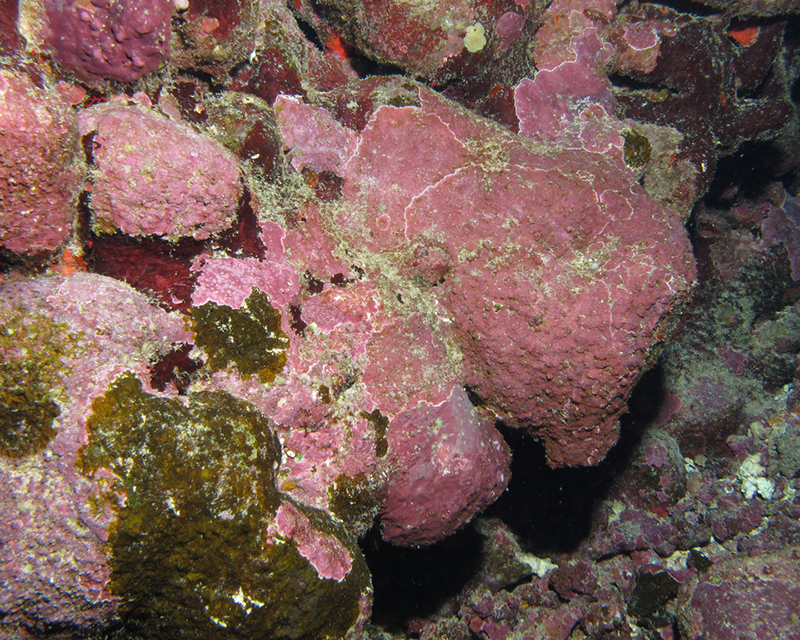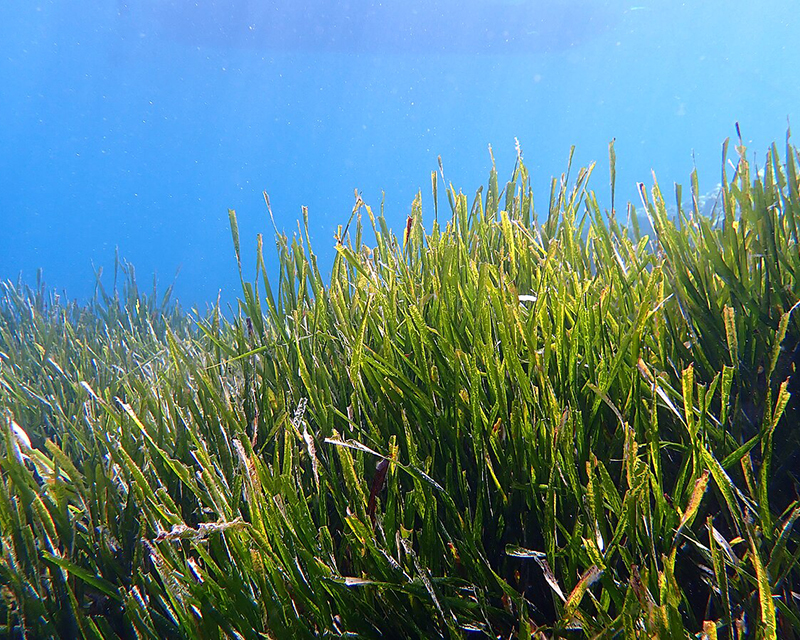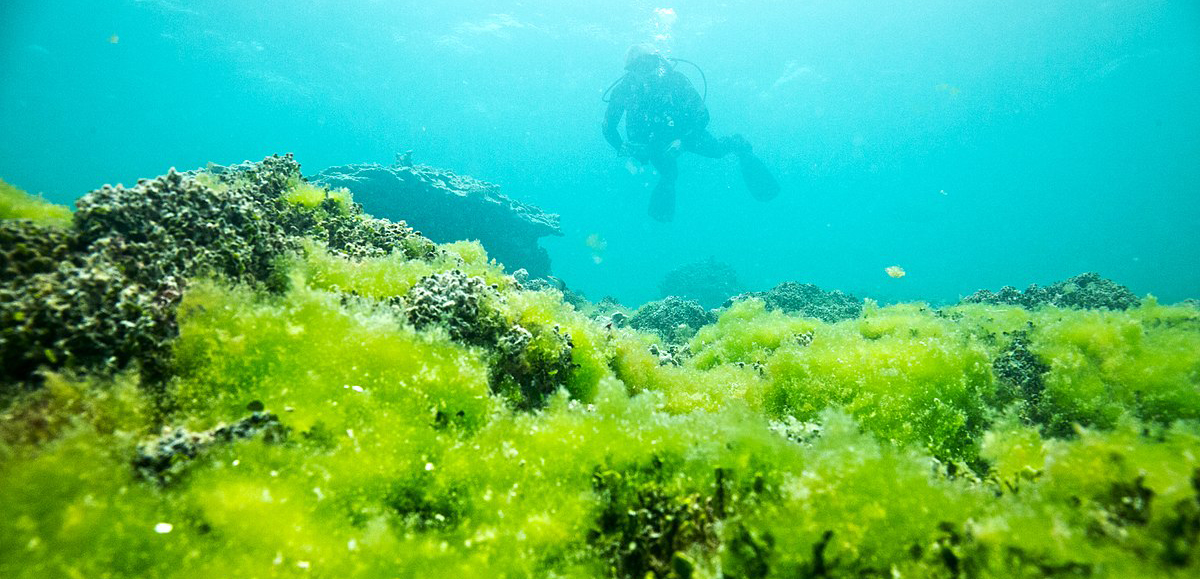Painting with Algae
Coral reefs are so colorful thanks in large part to algae. There are many different kinds of algae which are commonly broken up into three groups: brown, green, and red. These color groups come from the algae’s pigments. These pigments absorb different wavelengths of light. Colorful corals also get their unique colors in part from their symbiotic algae. On a tropical coral reef, green and red algae are the most common types. Together they form thick carpets often called ‘algal turfs.’
Red Coral(line) Algae

Despite their name, red coralline algae are not related to corals. They are, however, found on coral reefs and play a uniquely important role. Similar to corals, coralline algae is a calcifying organism. But instead of building large structures, they act more like cement. Forming a solid base and gluing loose debris onto the seafloor.
Unlike other algal turfs, red coralline algae is highly supportive of coral growth. These algal mats provide a safe place for new coral polyps to settle.
The Neighbor’s Lawn

Coral reefs and sea grasses have a close relationship. Unlike algae, these producers are true plants of the flowering family. It is common to find patches of sea grass growing between reef habitats on the sandy seafloor. Some grow in huge meadows. Many reef organisms begin their life within these calm meadows before returning to the reef as adults.
Much like terrestrial plants, sea grasses are great at cleaning pollutants from the water. This helps protect reefs from harmful chemicals or nutrients. Sea grasses also grow root systems that helps hold them firmly in place. Waves passing through sea grass meadows lose steam before reaching a coral reef. This can provide some much-needed protection for the reef.
From Coral to ‘Algal’ Reef
A major concern on today’s coral reefs is their transformation into algal reefs. Corals are on the decline while many algae are thriving in our ever-changing ocean. Algae are less sensitive than corals to increased temperatures due to climate change. Pollutants, such as from agriculture, can cause algal blooms. (The increase in nutrients is great for algae but can be damaging for corals.) Overfishing on many reefs has also left fewer herbivores to graze on algae. Together, this has allowed algae to grow over corals in many places, sometimes smothering them before they can recover. This means that in many places where corals used to thrive, algae now dominate the seafloor.

Yet, there are ways we can still help. Limiting fishing and reducing pollution have been great at helping coral reefs recover. In many places, coral restoration projects are working to bring live corals back where they once thrived. Restoration can be done by transplanting live colonies onto either natural or artificially made reefs. By lending a helping hand we can give coral reefs a chance to survive far into the future.
Read more about: Cruising Around Coral Reefs
Bibliographic details:
- Article: Producers of coral reefs
- Author(s): Dr. Biology
- Publisher: Arizona State University School of Life Sciences Ask A Biologist
- Site name: ASU - Ask A Biologist
- Date published:
- Date accessed:
- Link: https://askabiologist.asu.edu/producers-coral-reefs
APA Style
Dr. Biology. (). Producers of coral reefs. ASU - Ask A Biologist. Retrieved from https://askabiologist.asu.edu/producers-coral-reefs
Chicago Manual of Style
Dr. Biology. "Producers of coral reefs". ASU - Ask A Biologist. . https://askabiologist.asu.edu/producers-coral-reefs
Dr. Biology. "Producers of coral reefs". ASU - Ask A Biologist. . ASU - Ask A Biologist, Web. https://askabiologist.asu.edu/producers-coral-reefs
MLA 2017 Style

The algae living in corals aren't the only producers you will find in coral reefs. Floating all around, you can find many kinds of plankton. Check out our Plankton Zoom Gallery to get a close-up look at different types of plankton.
Be Part of
Ask A Biologist
By volunteering, or simply sending us feedback on the site. Scientists, teachers, writers, illustrators, and translators are all important to the program. If you are interested in helping with the website we have a Volunteers page to get the process started.


